The Lawn Specialists
Transform Your Yard with the Right Grass
Contact (239) 475-0090 for Your Free Yard Assessment
Best Grass Types for Lawns
With warm weather, high humidity, and sandy soil, it can be difficult to choose the right grass type to use in your yard. Whether it’s the canalside communities in the Southwest or the busy locations along Cape Coral Parkway, and even nearby areas like Fort Myers, each neighborhood has its own condition that affects how certain greenery grow. Selecting the appropriate type will result in a healthy green yard that will look good in this special environment.
This guide highlights the best meadow for different needs, such as shaded or high-traffic areas, and provides suggestions tailored surrounding communities.
What Makes Cape Coral’s Soil Different?
Coastline features a canal-heavy landscape with fine, gray Myakka sand, named “big waters”, covering 1.5 million acres as Florida’s official state soil. Before planting greenery, test your soil’s pH to assess its acidity and select the most suitable greenery type for your garden.
How to Prepare Soil for Grass
Sandy soil often drains too quickly and lacks nutrients. Improve its structure by blending in organic compost, decomposed manure, peat, or vermiculite. The peat and vermiculite help hold moisture, while compost adds rich organic matter. Focus on the top 6 inches of soil, where Landscape roots grow. Blend amendments before planting and add more annually to enhance soil health over time.
Common Types of Grass to Grow
The most common types for lawns are:
St. Augustine
St. Augustine is a popular garden choice especially for shady areas like under palm trees or beside homes. Its broad, flat blades create a thick, lush green landscape. Varieties like Floratam and Palmetto are popular, with Palmetto needing only 4–5 hours of filtered sunlight daily, ideal for shaded yards in neighborhoods like Yacht Club or Pelican.

Where It Grows Best
It loves Cape Coral’s warm, humid climate and tolerates sandy or clay soils. It handles some salt, making it suitable for canal-front homes. It spreads quickly via runners, so sod or plugs work well for planting.
How to Take Care of It
Mow 2.5–4 inches every 7–10 days depending on growth rate and season. Avoid overwatering to prevent gray leaf spot disease. Use fertilizer sparingly to deter pests like chinch bugs, common It is not ideal for high-traffic areas like community parks.
Best Uses
Perfect for shady residential yards but not suited for sports fields or heavy foot traffic.
Zoysia
Zoysia offers both strength and comfort, making it ideal for landscape where family members enjoy sitting and children play or pets roam. Varieties like Empire and Zeon are tough in this areas like Cape Harbour.
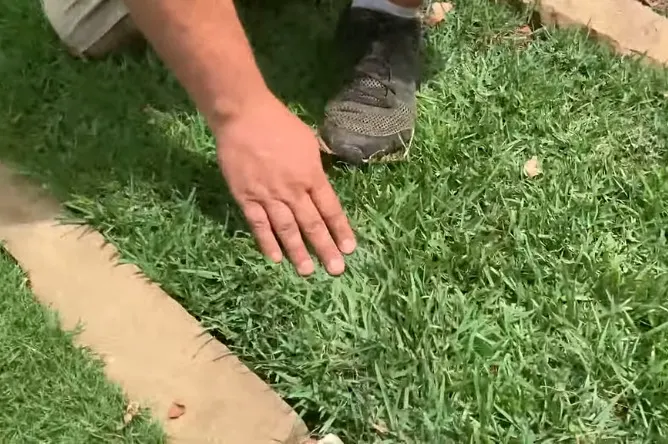
Where It Grows Best
It requires 6 hours of sunlight but tolerates light shade. This type grows well in sandy or clay soils and becomes drought-tolerant over time. Since it’s not very salt-tolerant, it is a better fit for inland regions.
How to Take Care of It
Mow to 1–2 inches weekly. Dethatch occasionally to maintain health. Use minimal fertilizer to keep it green. It may brown during rare cold snaps but recovers in spring.
Best Uses
Great for active garden it grows slowly and takes time to repair if damaged.
Bermuda
Bermuda thrives in full sun and tolerates drought with its deep roots and thin blades. Varieties like TifTuf and Celebration are used sports fields or sunny landscape.
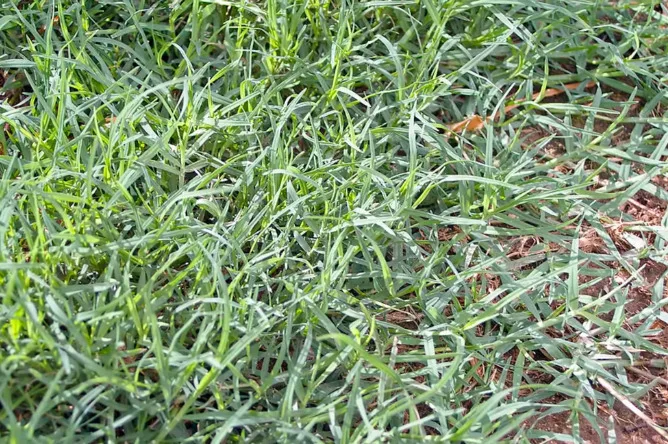
Where It Grows Best
It needs ample sunlight and grows in sandy, clay, or salty soils, perfect for dry patches. Its deep roots make it drought-resistant, ideal for canal-front properties.
How to Take Care of It
Mow short (0.5–2 inches) frequently and fertilize regularly. Watch for mole crickets or dollar spot disease, common in Lee County. It requires more maintenance but recovers quickly from wear.
Best Uses
Ideal for sunny, high traffic landscape handling kids, pets, or frequent gatherings well.
Bahia
With its deep roots and light green color, Bahia is a low-maintenance option that is suitable for sandy soils. Pensacola Bahia is commonly seen in rural and near Pine Island Road.
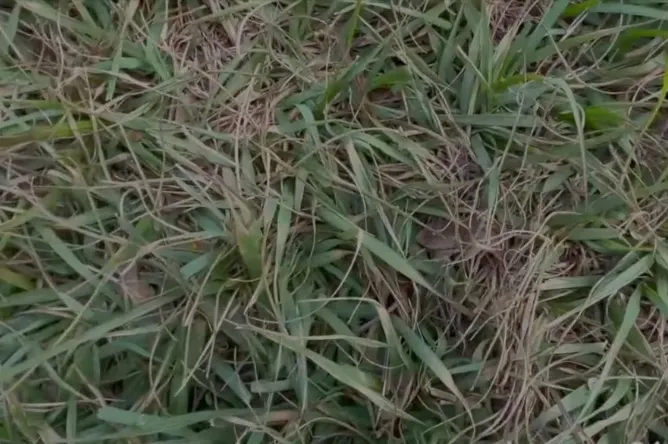
Where It Grows Best
It thrives in full sun and dislikes shade or salt, so it is better for inland areas Its deep roots make it drought-tolerant and fast-growing from seeds or sod.
How to Take Care of It
Mow to 3.5–4 inches every 1–2 weeks with minimal fertilizer. Watch for nematodes. Its seedheads may look untidy, so it is not ideal for manicured landscape.
Best Uses
Best for large, low maintenance yards where minimal upkeep is preferred.
Centipede
Centipede is a light green, slow-growing greenery that does well in poor soil conditions. Varieties such as TifBlair make a thick, low maintenance lawn.
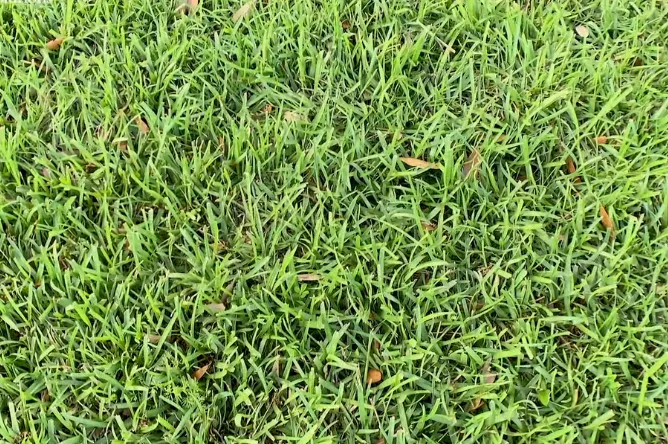
Where It Grows Best
It handles light shade and dry spells but doesn’t perform well in salty or high-traffic areas. It is a great choice for acidic soils.
How to Take Care of It
Mow to 1.5–2.5 inches every 1–2 weeks. Avoid over-fertilizing to prevent Centipede decline. Monitor for spittlebugs.
Best Uses
Great for low-maintenance home lawns in areas with poor soil, requiring minimal care.
Seashore Paspalum
Ideal for coastal areas, Seashore Pasplum is a deep green turf that performs well in salty environments. arieties like SeaIsle 1 can also tolerate saline irrigation water.
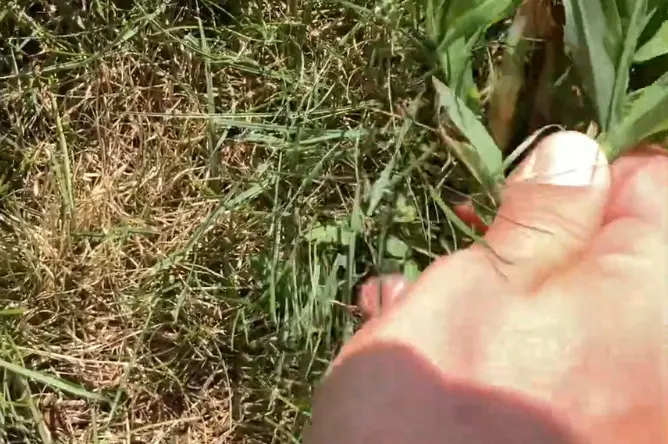
Where It Grows Best
It needs full sun and grows in wet, sandy, or clay soils. It’s highly salt-tolerant but struggles in shade or very dry conditions.
How to Take Care of It
Mow to 1–2 inches weekly and water regularly. Watch for dollar spot disease. Its dense growth helps suppress weeds.
Best Uses
Perfect for beachside or canal-front properties in South Cape Coral, especially where salt is a concern.
Buffalo
With its blue-green color and fine blades, Buffalo offers excellent drought resistance and requires minimal maintenance. It is not widely used but ideal for low upkeep yards.

Where It Grows Best
It requires full sun and well-drained soil but struggles in sandy or shady areas. It’s tough in Cape Coral’s hot climate and needs little water.
How to Take Care of It
Mow short occasionally with minimal fertilizer. Monitor for weeds and chinch bugs, as its open growth can attract them.
Best Uses
Ideal for sunny, low maintenance yards focused on water conservation.
Carpet
With its coarse texture and light green hue, Carpet offers good tolerance to wet, acidic soils and requires minimal maintenance. It’s not widely used but ideal for low upkeep areas especially in damp, shaded spots.
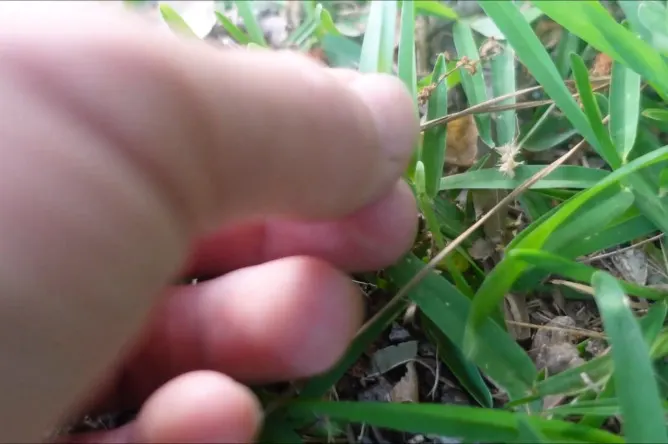
Where It Grows Best
It thrives in wet, acidic soils and partial shade, making it suitable for damp, less maintained areas. It grows well in sandy or clay soils but struggles in high-salt environments.
How to Take Care of It
Mow to 2 inches every 1–2 weeks. It requires minimal fertilization and watering, and watch for pests due to its open growth habit.
Best Uses
Ideal for natural landscapes or low maintenance areas especially near canals or shaded spots.
Fine Fescue
With its fine texture and dark green color, Fine fescue provides excellent shade tolerance and low water needs. It is not widely used but ideal for low-maintenance yards in North America particularly in shaded, cooler microclimates.

Where It Grows Best
It prefers shady areas and well-drained soils, thriving in cooler microclimates. It tolerates poor soil conditions but struggles in North America intense heat unless shaded.
How to Take Care of It
Mow to 1–3 inches every 1–2 weeks. Use minimal water and fertilizer, and monitor for drought stress in hot months.
Best Uses
Great for shaded residential yards or specialty lawns North America especially during cooler seasons.
Kentucky Blue
With its rich green color and dense growth, Kentucky blue offers good durability in well-drained soils and requires moderate care. It is not widely used but ideal for landscaped yards especially in cooler, irrigated areas.
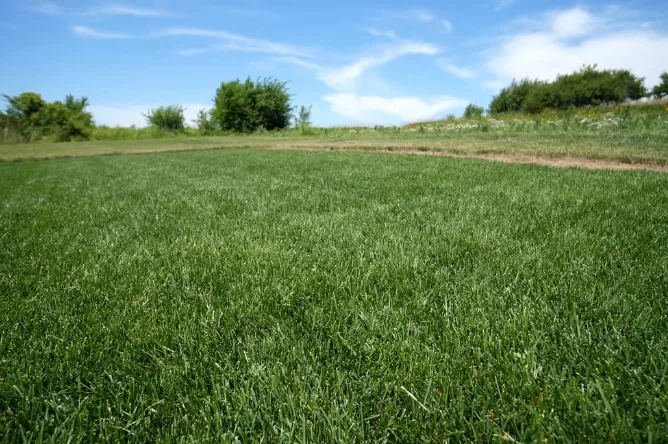
Where It Grows Best
It thrives in well-drained soils and cooler conditions, requiring ample irrigation and shade to adapt to climate. It prefers fertile soils over sandy ones.
How to Take Care of It
Mow to 2–3 inches every 1–2 weeks. Fertilize regularly and water consistently, watching for heat-related stress or diseases.
Best Uses
Suitable for landscaped areas or golf courses where cooler, shaded environments can be maintained.
Perennial Rye
With its fine texture and vibrant green shade, Perennial Rye provides versatility and moderate traffic tolerance. It’s not widely used but ideal for mixed lawns particularly as an overseed in cooler seasons.
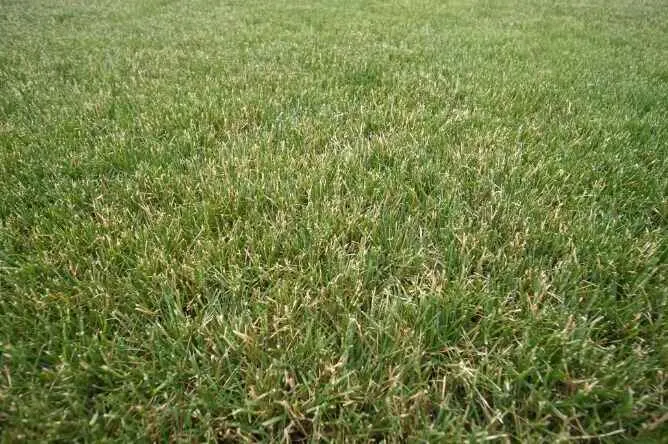
Where It Grows Best
It grows well in well-drained soils with moderate shade or sun, often used as overseed for warm-season grasses. It needs consistent moisture in heat.
How to Take Care of It
Mow to 2–4 inches every 1–2 weeks. Water regularly and fertilize lightly, monitoring for traffic wear or drought.
Best Uses
Perfect for mixed lawns or sports field especially during cooler months as an overseed.
Tall Fescue
With its coarse blades and deep green color, Tall fescue offers strong drought resistance and shade tolerance. It’s not widely used but ideal for low-upkeep, shaded yards especially with proper irrigation.
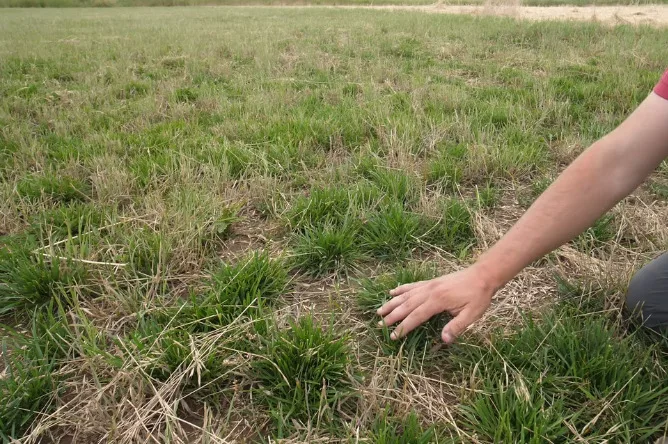
Where It Grows Best
It thrives in shaded, well irrigated areas with deep, fertile soils, tolerating heat with proper care and moisture.
How to Take Care of It
Mow to 2.5–4 inches every 1–2 weeks. Use moderate fertilization and water regularly, watching for pests or disease.
Best Uses
Ideal for shaded, lush lawns suitable for residential or community spaces.
| Type of Grass | Average Height | When to Mow |
| St. Augustine | 2 to 3 inches | 3 to 4.5 inches |
| Zoysia | 1 to 2 inches | 1.5 to 3 inches |
| Bermuda | 1 to 2 inches | 1.5 to 3 inches |
| Bahia | 3 to 4 inches | 4.5 to 6 inches |
| Centipede | 1 to 2 inches | 1.5 to 3 inches |
| Seashore Paspalum | 3 to 6 inches | 0.5 to 2 inches |
| Buffalo | 2 to 4 inches | 3 to 6 inches |
| Carpet | 2 inches | 3 inches |
| Fine Fescue | 1 to 3 inches | 1.5 to 4.5 inches |
| Kentucky Blue | 2 to 3 inches | 3 to 4.5 inches |
| Perennial Rye | 2 to 4 inches | 3 to 6 inches |
| Tall Fescue | 2.5 to 4 inches | 3.75 to 6 inches |
FAQs
Conclusion
Choosing the right grass for your landscape depends on your neighborhood, soil, and needs, like shade or play areas. For expert advice tailored to Southwest, Southeast, Northwest, or Northeast , or nearby areas like Fort Myers, Punta Gorda, Naples, or Clewiston, consult our local lawn care professional to make your yard lush and vibrant.
239) 475-0090
Grow a lush lawn! Call Cape Coral experts for a free yard check today!
